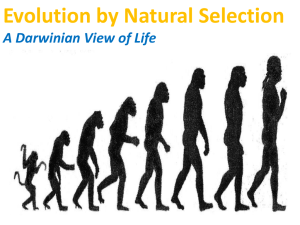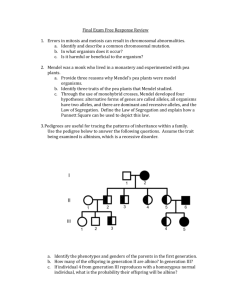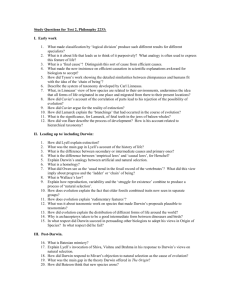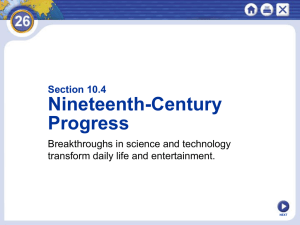ANTH 101 ch 2 notes
advertisement
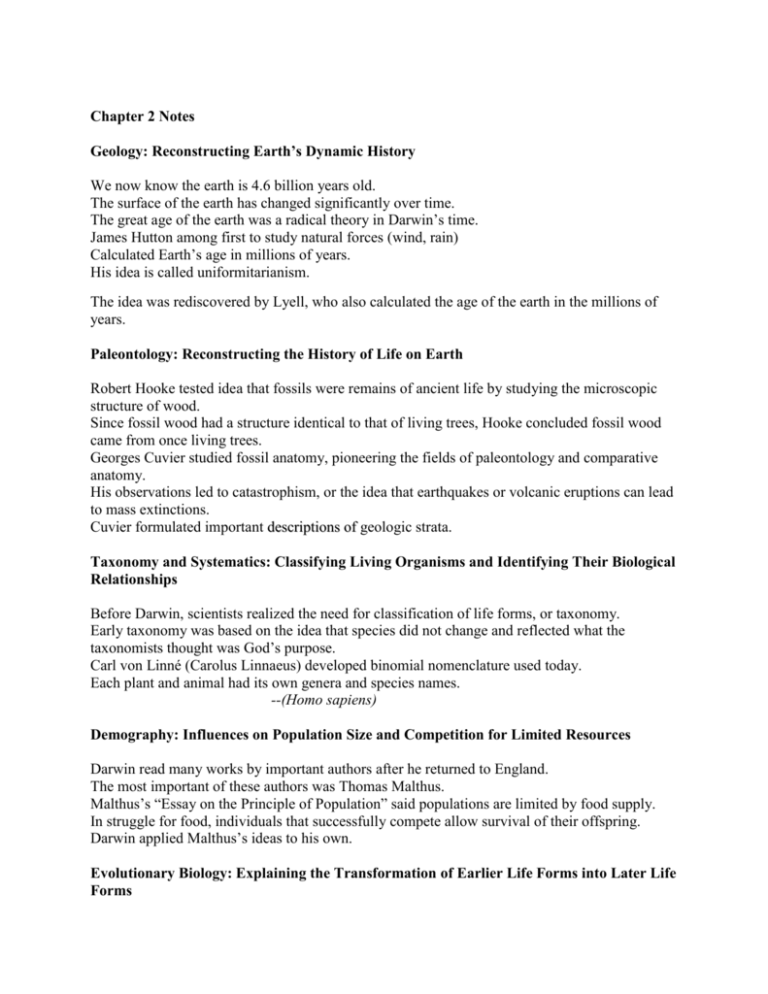
Chapter 2 Notes Geology: Reconstructing Earth’s Dynamic History We now know the earth is 4.6 billion years old. The surface of the earth has changed significantly over time. The great age of the earth was a radical theory in Darwin’s time. James Hutton among first to study natural forces (wind, rain) Calculated Earth’s age in millions of years. His idea is called uniformitarianism. The idea was rediscovered by Lyell, who also calculated the age of the earth in the millions of years. Paleontology: Reconstructing the History of Life on Earth Robert Hooke tested idea that fossils were remains of ancient life by studying the microscopic structure of wood. Since fossil wood had a structure identical to that of living trees, Hooke concluded fossil wood came from once living trees. Georges Cuvier studied fossil anatomy, pioneering the fields of paleontology and comparative anatomy. His observations led to catastrophism, or the idea that earthquakes or volcanic eruptions can lead to mass extinctions. Cuvier formulated important descriptions of geologic strata. Taxonomy and Systematics: Classifying Living Organisms and Identifying Their Biological Relationships Before Darwin, scientists realized the need for classification of life forms, or taxonomy. Early taxonomy was based on the idea that species did not change and reflected what the taxonomists thought was God’s purpose. Carl von Linné (Carolus Linnaeus) developed binomial nomenclature used today. Each plant and animal had its own genera and species names. --(Homo sapiens) Demography: Influences on Population Size and Competition for Limited Resources Darwin read many works by important authors after he returned to England. The most important of these authors was Thomas Malthus. Malthus’s “Essay on the Principle of Population” said populations are limited by food supply. In struggle for food, individuals that successfully compete allow survival of their offspring. Darwin applied Malthus’s ideas to his own. Evolutionary Biology: Explaining the Transformation of Earlier Life Forms into Later Life Forms By the late 1700s, scientists began to argue for change in biological organisms. Jean-Baptiste de Monet (Chevalier de Lamarck) speculated that animals change for purposes of self-improvement. He believed that animals change anatomically in response to new demands or needs and pass those changes on to their offspring. His idea is called “Lamarckian inheritance of acquired characteristics.” We now know this idea to be incorrect. Darwin’s main contribution was the synthesis of ideas with personal observations of the natural world. Darwin observed fossils in South America that resembled living creatures. Darwin drew on Malthus’s ideas of reproduction, variation, and population to form his theory of speciation. Darwin hypothesized that offspring that survive possess advantages for acquiring food and that the frequency of the advantage would increase. As environmental conditions changed, offspring without advantages to adapt to the change would die off. Over time, a common ancestor would give rise to related species. Darwin collected his research in the 1830s and 1840s but did not write his results until 1856. Alfred Russell Wallace contacted Darwin in 1858 with a set of ideas very similar to those Darwin had arrived at; both men independently talked about evolution by natural selection. Concerned that Wallace would gain the credit for the idea, Darwin rushed into the writing of his book On the Origin of Species, which was published in 1859. Since Darwin: Mechanisms of Inheritance, the Evolutionary Synthesis and the Discovery of DNA Mechanisms of Inheritance After articulation of his theory of natural selection, Darwin turned to the question of how traits are passed from parent to offspring. He was unaware of the research being conducted by Gregor Mendel in a monastery in the Czech Republic. Mendel’s experiments with pea plants led to the fundamentals of modern genetics. Mendel concluded that a discrete physical unit was responsible for transmission of traits (now called genes). Mendel also discovered that the traits in the pea plants did not blend. (Plants were either tall or short.) Alternate forms of a gene are now called alleles. Alleles are either dominant or recessive. The combination of the genes from each parent determines the trait expressed in the offspring. In 1908, Thomas Hunt Morgan repeated Mendel’s work with fruit flies. His team discovered that all genes are on chromosomes and that both genes and chromosomes are transmitted during reproductive cell division. The Evolutionary Synthesis, the Study of Populations, and the Causes of Evolution The combination of Darwin’s theory of evolution and Mendel’s theory of heredity is known as the modern synthesis and includes four causes of evolution. 1) Natural selection acts only on already existing genes. 2) Mutation introduces new genetic material into the gene pool. 3) Gene flow refers to the spread of genetic material from one population to another. 4) Genetic drift is random chance in the frequency of alleles. The modern synthesis has unified all of biology and its affiliated fields. Population genetics tries to answer questions about why and how changes in the gene pool occur. DNA: Discovery of the Molecular Basis of Evolution Watson and Crick published their discovery of the structure of DNA in 1953. Franklin used a special technique to image the DNA double helix. DNA analysis has provided new insight into biological relationships between organisms and a molecular “clock” to study evolutionary change. DNA has also allowed science to study illnesses such as cancer, heart disease, and stroke.




